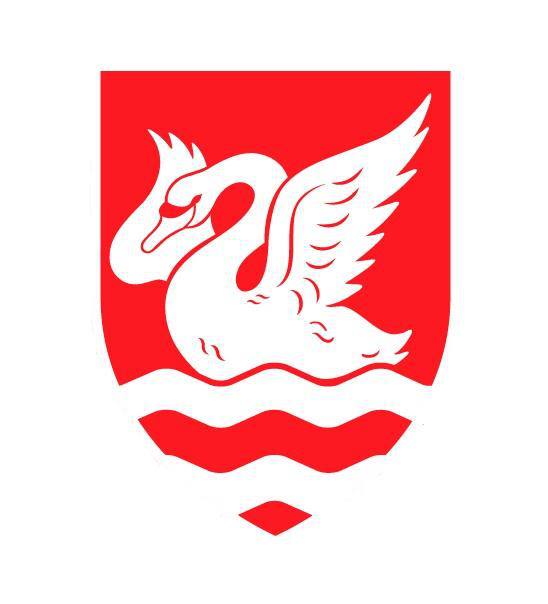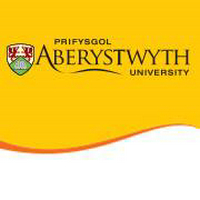Oxford Brookes University is a new university in Oxford, England. It can trace its origins to 1865 when the former Oxford School of Art was established. The university was renamed in 1992 to honour its former principal, John Brookes. The university's School of Architecture is one of the largest in Britain.
Oxford Brookes is one of the UK’s leading modern universities and enjoys an international reputation for teaching excellence and innovation as well as strong links with business and industry. Around 4,000 students from over 120 different countries worldwide choose to study at Oxford Brookes every year, making up approximately a quarter of our student population.
Oxford Brookes is situated 50 miles from London in the beautiful city of Oxford. One of the world’s great student cities, Oxford combines a rich cultural history with a vibrant, youthful and cosmopolitan atmosphere. It is a wonderful place to live and study.

The University of Winchester is located close to the centre of the ancient cathedral city of Winchester, an hour away from London in the shadow of the beautiful South Downs. It also has a site in Basingstoke known as Chute House in the heart of its vibrant commercial sector.
Winchester is a more personal University, with under 6,000 students studying a broad range of programmes at both undergraduate and postgraduate level. The culture of the University is informal, with an emphasis on providing a supportive community for students to unlock their potential and become the best they can be in their chosen careers.
The institution has a long history, having been established in 1840, and it combines this heritage with innovative and forward-looking teaching and learning. Research and knowledge transfer is also key, underpinning all its teaching, from Foundation Degree to PhD level. Winchester has scholars who are at the very forefront of their disciplines.

Of the many reasons students come to Stirling, academic reputation and research standards among them, one factor is always cited: the outstanding beauty of the University's campus.
The essence of the University of Stirling is its great people: its graduates, staff and students are helping to shape the world. Founded by Royal Charter in 1967, the University of Stirling was the first genuinely new university in Scotland for over 400 years. Its retains that pioneering spirit and a passion for innovation and excellence. Built in the shadow of the Ochil Hills and Wallace Monument, the Stirling campus is situated on a magnificent 310-acre estate, centered around a large lake and 18th-century Airthrey Castle.
Stirling is top in Scotland and ninth in the UK in the Research Success Rankings. The UK-wide 2008 Research Assessment Exercise (RAE) confirmed that Stirling is the leading Scottish research university in a number of areas.

Founded in 1895 and a university since 1966, Aston is a long established research-led University known for its world-class teaching quality and strong links to industry, government and commerce.
Aston has been a leading university for graduate employment success for over 25 years. The University is currently ranked 8th overall for graduate employment (2013 Sunday Times University Guide) and is consistently ranked in the UK's top 40 universities confirming its place amongst the elite.
Aston's four Schools of Study offer a range of undergraduate and postgraduate degree programmes, and also work with the public and private sectors to develop tailored Foundation Degree programmes.
Aston University is based in the centre of Birmingham, home to over 65,000 students and one of Europe’s liveliest and most welcoming cities.
The friendly and safe 40-acre campus houses all the University's academic, social and accommodation facilities for our 9,500 students.

The University of Buckingham (UB) is a private university located in Buckingham, Buckinghamshire, England, on the banks of the River Great Ouse. It was originally founded as the University College at Buckingham in 1973 and received its Royal Charter from the Queen in 1983.
The university's funding regime is not like that of other UK universities, but rather is on the model of many US universities, as it does not receive state funding via HEFCE. It has formal charity status as a non-profit making institution dedicated to the ends of research and education.
Buckingham offers bachelor's degrees, master's degrees and doctoral degrees through five 'schools' (or faculties) of study.
Santander Universities UK signed an agreement with the university in December 2013 to provide scholarships, travel bursaries and internships.

Aberystwyth University is a public research university located in Aberystwyth, Wales. It was established in 1872 as the first Welsh university. There are over 7,500 students in the University's three main faculties of arts, social science and the sciences.
The National Student Survey named Aberystwyth fifth in the UK in 2006 and tenth in 2007 for overall student satisfaction. In The Times Good University Guide 2008, it shared with five other UK universities the highest score for "student satisfaction" and ranked 39th out of 113 overall.
Aberystwyth is one of the best towns to be a student in and high levels of student satisfaction over the years. Despite being a small town, Aberystwyth is a lively and a vibrant location. With half of its population being students, Aberystwyth benefits from the energy and motivation of thousands young students who pursue different ways of spending their free time. Because of this, Aberystwyth has nearly 150 clubs and societies, number of cafés and restaurants as well as dozens of venues that are perfect for hanging out with friends.

Nottingham Trent University (NTU) is a public university in Nottingham, England. It was founded as a new university in 1992 from Trent Polytechnic (later Nottingham Polytechnic). Its roots go back to 1843 with the establishment of the Nottingham Government School of Design which still exists within the university today. It is one of the largest universities in the UK with around 28,000 students split over three different campuses.
In 2008, The Complete University Guide named Nottingham Trent the "top post-1992 University" in the country. The university has "one of the best employability records of any university in England and Wales". It maintains close ties to over 6,000 businesses and 94% of students progress to full-time employment or further education within six months of graduating.The Guardian calls Nottingham Trent "the most environmentally friendly university in the country".
The university has a strong research arm with, in 2008, 74% of the university's research considered of international status and an impressive 8% ranked as world-leading.

The University of Keele, commonly known as Keele University, is a public research campus university about 3 miles (4.5 km) from Newcastle-under-Lyme, Staffordshire. Keele was granted university status by Royal Charter in 1962 and was originally founded in 1949 as the 'University College of North Staffordshire', as an experimental college dedicated to a broad curriculum and interdisciplinary study.
The university occupies a 620 acre (250 ha) rural campus close to the village of Keele and has a science park and a conference centre, making it the largest main campus university in the UK. The University's School of Medicine operates the clinical part of their courses from a separate campus at the University Hospital of North Staffordshire in Hartshill, Stoke-on-Trent. The school of nursing and midwifery is based at the nearby clinical education centre.

Arts University Bournemouth is a further and higher education university based in Poole, United Kingdom specialising in arts, performance, design, and media. In November 2012, the University also celebrated a 97.7% employment rate.
n June 2012 the Government announced that the qualifying threshold required by an institution in order to gain full university status was to be lowered from 4,000 to 1,000 full-time higher education students. The Arts University College at Bournemouth satisfied this criterion for full university title and officially became Arts University Bournemouth (AUB) following approval from the Privy Council on 13 December 2012.

Two of the university's founding colleges, S. Katharine's (1844) and Notre Dame (1856) were established in the 19th century. These colleges were in Warrington and Liverpool City Centre respectively. These were among the first to provide opportunities for higher education to women. They were supplemented on Merseyside when a second Catholic teacher education college, Christ's College, on a site adjacent to St. Katharine's, admitted its first students in 1964. (Christ's was the first Catholic co-educational teachers' training college in England.)
In 1980, these three colleges joined in an ecumenical federation under the holding title of Liverpool Institute of Higher Education (LIHE). Archbishop Derek Worlock and Bishop David Sheppard wrote of this as being "a sign of hope".




